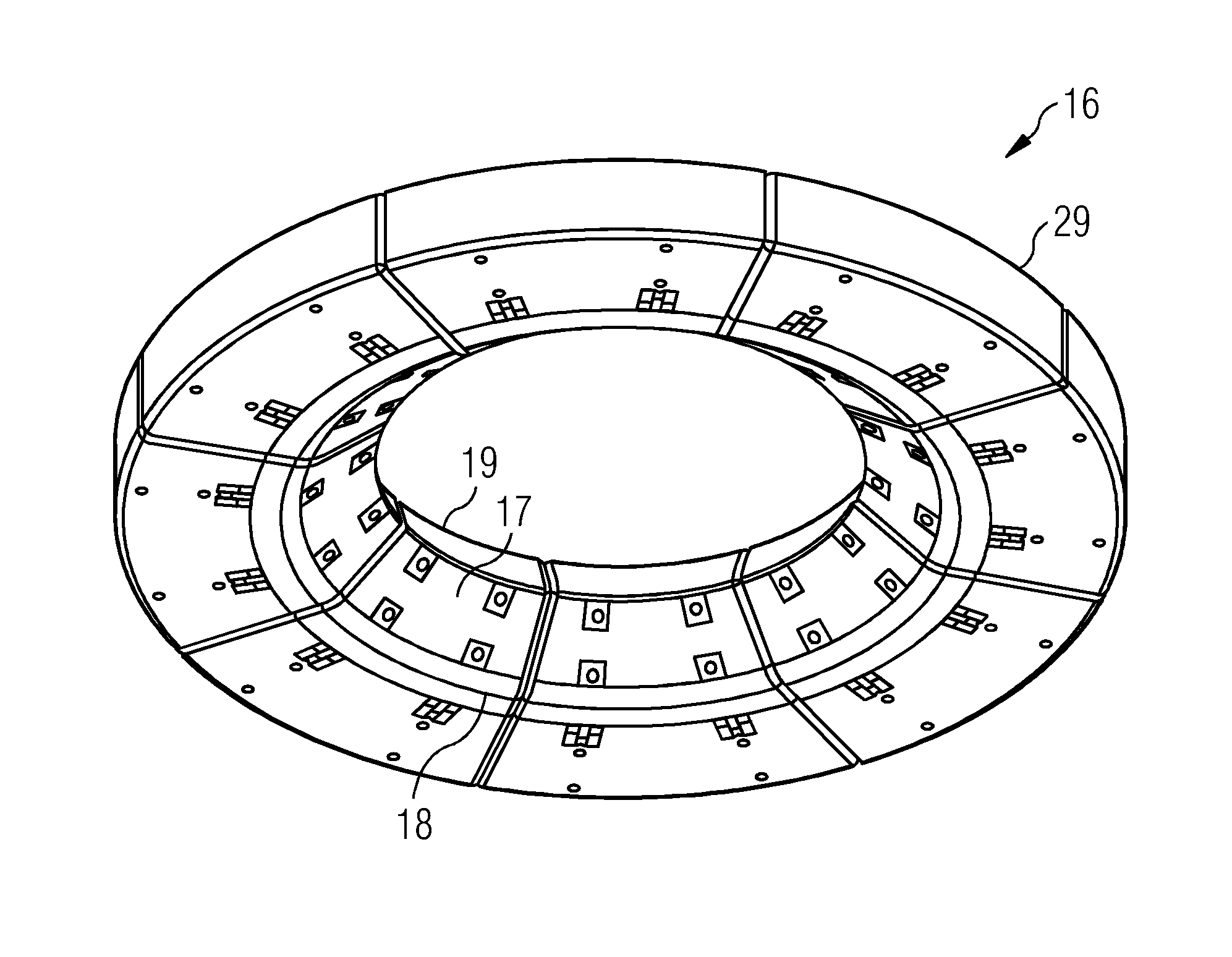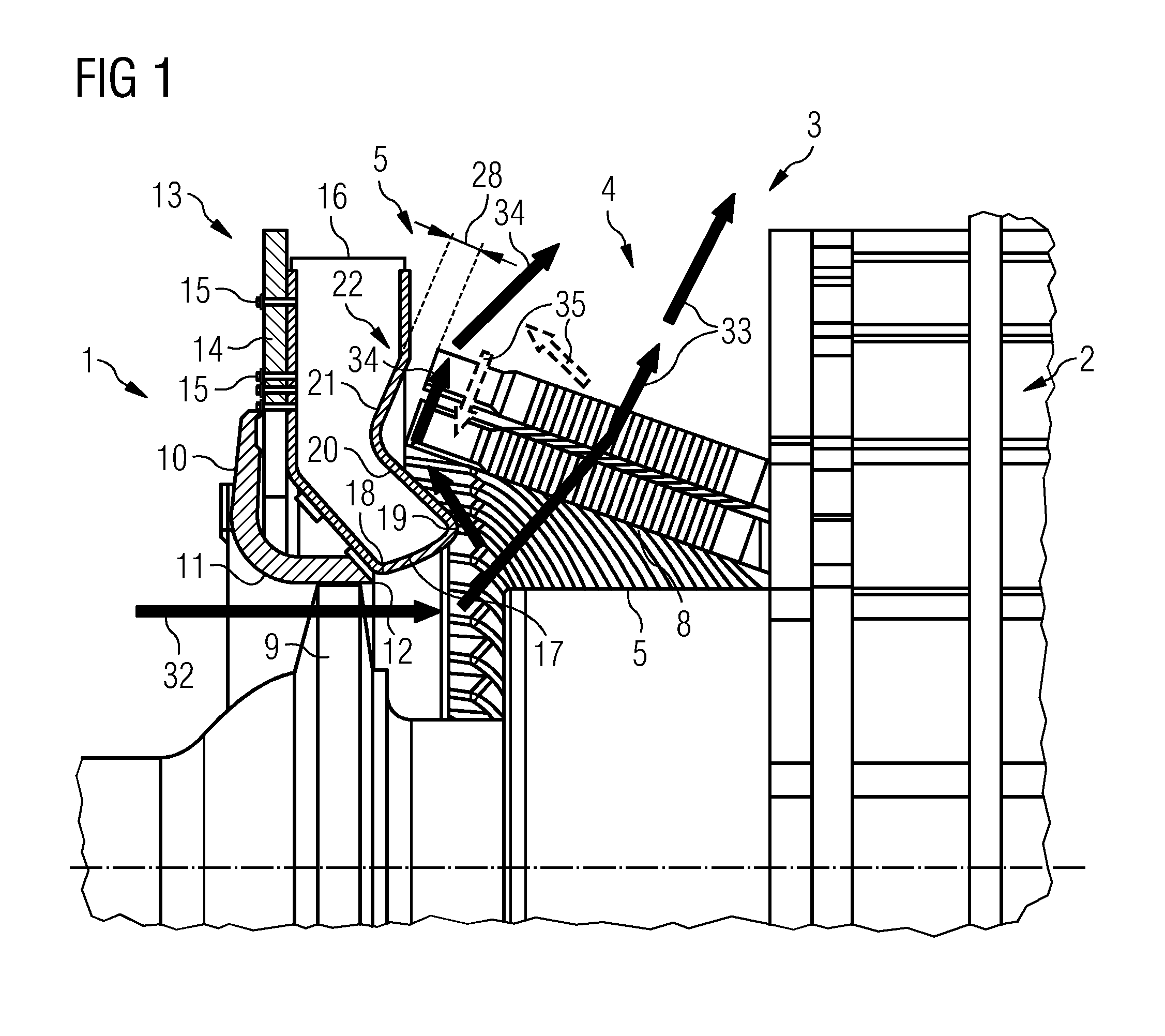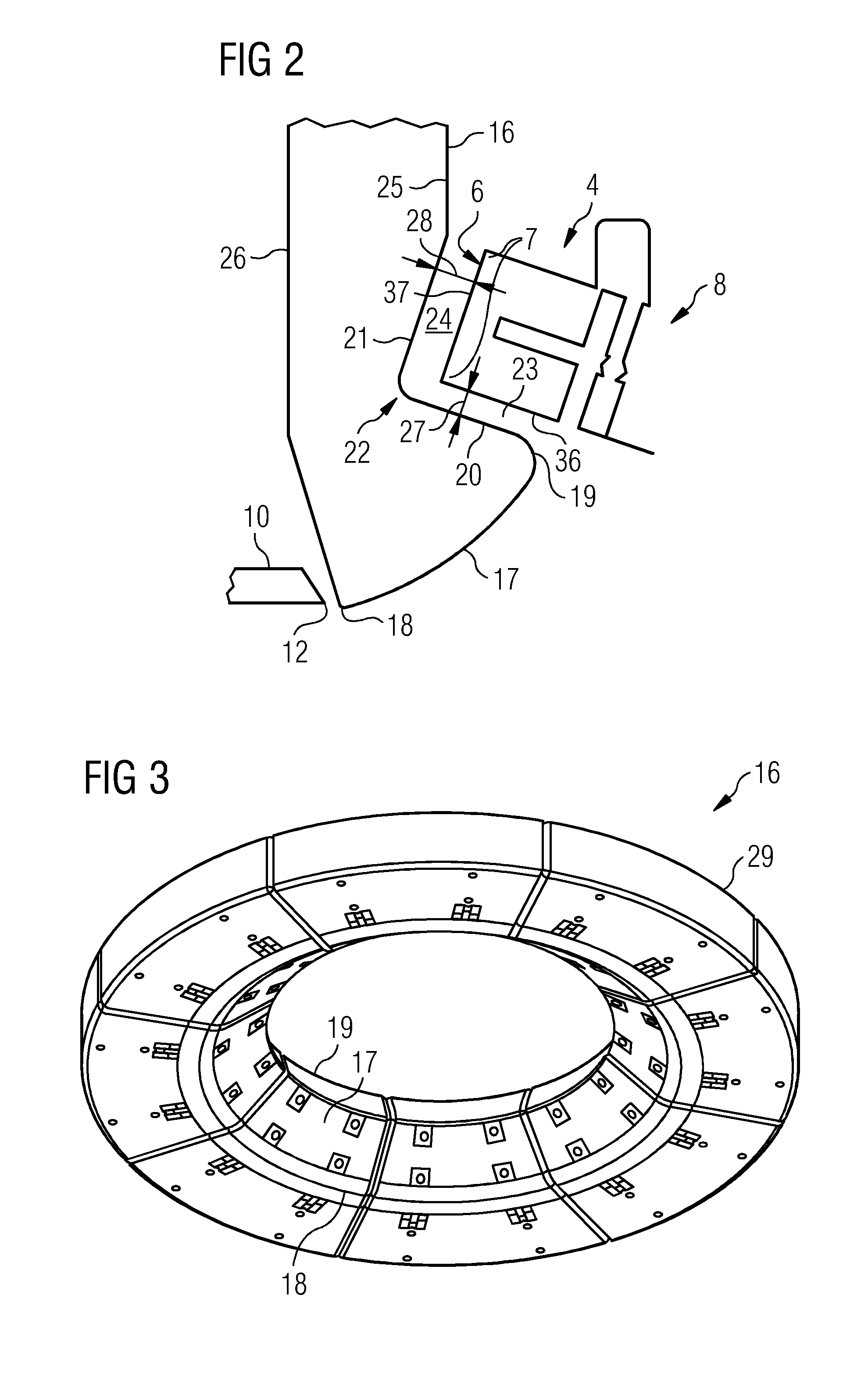Cooling device for cooling a winding braid of an electrical machine and method for retrofitting the electrical machine with the cooling device
a cooling device and winding braid technology, which is applied in the direction of cooling/ventilation arrangement, dynamo-electric components, supports/encloses/casings, etc., can solve the problem of winding braid thermal overload risk
- Summary
- Abstract
- Description
- Claims
- Application Information
AI Technical Summary
Benefits of technology
Problems solved by technology
Method used
Image
Examples
Embodiment Construction
[0020]As can be seen from FIGS. 1 to 6, a generator 1 comprises a stator 2, which is equipped with a stator winding, which is formed by an air-permeable winding braid 3. The stator 2 with its stator winding is formed rotationally symmetrically about the machine axis of the generator 1, wherein, at its end face, the winding braid 3 comprises a rotationally symmetrical winding head 4. The winding braid 3 is formed by a winding conductor 5 or a plurality winding wires 5, wherein the winding conductors 5 or the winding wires 5 are wound to form the winding braid 3. The winding head 4 forms an end face 6 of the winding braid 3, on which an end crown connection 7 and an involute 8 of the stator winding are arranged.
[0021]The generator 1 is air-cooled, wherein a fan 9 is provided for this purpose. The fan 9 comprises a blade wheel, which is rotatable about the machine axis of the generator 1 and is formed by a plurality of identically shaped axial blades arranged equidistantly over the per...
PUM
| Property | Measurement | Unit |
|---|---|---|
| distance | aaaaa | aaaaa |
| temperature resistance | aaaaa | aaaaa |
| speed | aaaaa | aaaaa |
Abstract
Description
Claims
Application Information
 Login to View More
Login to View More - R&D
- Intellectual Property
- Life Sciences
- Materials
- Tech Scout
- Unparalleled Data Quality
- Higher Quality Content
- 60% Fewer Hallucinations
Browse by: Latest US Patents, China's latest patents, Technical Efficacy Thesaurus, Application Domain, Technology Topic, Popular Technical Reports.
© 2025 PatSnap. All rights reserved.Legal|Privacy policy|Modern Slavery Act Transparency Statement|Sitemap|About US| Contact US: help@patsnap.com



